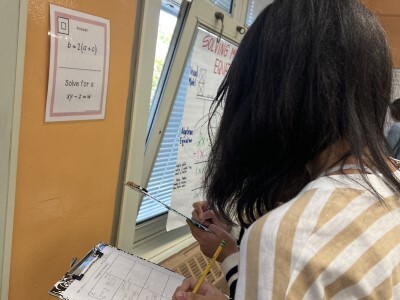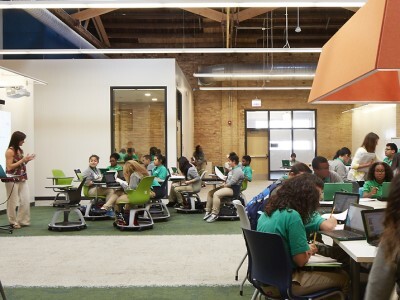Designing Rich (Math) Projects That Inspire
Topics

We’ve all had the experience of truly purposeful, authentic learning and know how valuable it is. Educators are taking the best of what we know about learning, student support, effective instruction, and interpersonal skill-building to completely reimagine schools so that students experience that kind of purposeful learning all day, every day.
We hear all the time about project-based learning. But how does it really work?
Of all the tools humans have ever created to help describe and understand our world, few are more useful than mathematics. Math helps us map the world, build sturdy houses, diagnose disease—I could go on and on. Reading this blog right now is possible thanks to math!
As a math teacher, this is obvious to me. But to my students, many of whom would actively tell you they hate math, it isn't. One of my biggest goals as an educator, therefore, is not just to teach students algebra and geometry—it's to change their very mindset toward math.
In a recent TEDx Talk, I offered my first principle for designing better learning experiences, in math or in any subject: to make learning meaningful. Students need to see immediately, without needing to ask, why what they are learning matters. I also gave an example of a math project I've created, in which students use mathematical models to predict future changes to a population of their choosing. And I showed how this particular project inspired one student, who told me on Day One that she'd never liked math, to start considering what we as humans can do to protect the endangered Indian elephant.
In this post, I want to dig into the process of creating a project like that, which, if done properly, can motivate an entire unit of study, show students why math matters, and inspire students to go above and beyond the requirements of the project itself.
Step 1: Define the most interesting problem that a unit's content lets people solve.
Math textbooks are full of interesting problems—the issue is that they always come at the end of the chapter! In a traditional classroom, students learn math skills through rote practice before applying them in any interesting way. In my classroom, I do the opposite: I present the most interesting problem first and tell students that the entire point of the unit is to develop the skills to solve that problem.
For instance, in my Demographer project, I ask students to choose a population they care about and predict its size in the year 2050. They don't know how to do it—which is the whole point! By the end of the unit, they will.
Step 2: Create an exemplar student response, incorporating key standards and a template to get students there.
My unit on functions requires students to understand the basics of functions (domain, range, graphing, etc.) as well as linear and exponential models. (Quadratics, too, but I address those in a different project.) So, I think systematically about how they can use each of those concepts to accomplish the task of predicting a population. I ask myself: What background information will they need? Where will each concept/skill be useful? What shape should their final report take, and how can it most effectively demonstrate mastery?
I find that the most effective way of doing this is simply to complete the project myself. In this case, I chose a population I cared about—Pacific humpback whales—and analyzed that population myself, using the same skills I want my students to develop. From there, it's relatively simple for me to create a template that students can use to do the same thing. Now they just need to learn how.
Step 3: Infuse project-related problems into every lesson.
I've motivated my students by having them choose populations they care about, so now I tie everything we learn in class back to population growth. Learning a new formula? Here's how you can use it to predict population. Analyzing a graph? Here's what it might tell you about population. "When," my students used to ask me, "will I ever use this in real life?" They don't ask that anymore. Because they're already using it!
My Demographer project was the first unit my students completed this year, so it took some adjustment getting used to it. "We have to do projects in math?," several students asked incredulously. But by the end of the unit, my students had modeled populations as diverse as they are: Indian elephants and snow leopards, Mexico and New York City, and anything else they chose. They learned functions pretty well, too!
I've applied this same three-step process to nearly every math unit I've taught: designing tiny houses to learn about geometry, analyzing World Bank data to learn descriptive statistics, etc. My projects and my approach are certainly a work in progress—sometimes a problem I find interesting will fall flat or it won't actually show the math I want it to illuminate. That's a natural part of learning, and it's OK; I reflect, collect student feedback, and try to make improvements for the next go-round. I continue to seek out project ideas from students, colleagues, and friends. Perhaps readers of this post will have some ideas as well?
Ultimately, I picture students' K-12 educations as little more than a series of these projects, each supported by rigorous instructional materials that ensure that every student acquires the skills to produce high-quality work. I've seen this approach work in math and I've worked with teachers who make it work in other subjects as well. Can we develop meaningful, project-based curriculum for every standard that we teach, which inspires every student that we reach? It's a lofty goal, but I believe we can.
Photo courtesy of Allison Shelley/The Verbatim Agency for American Education: Images of Teachers and Students in Action.




